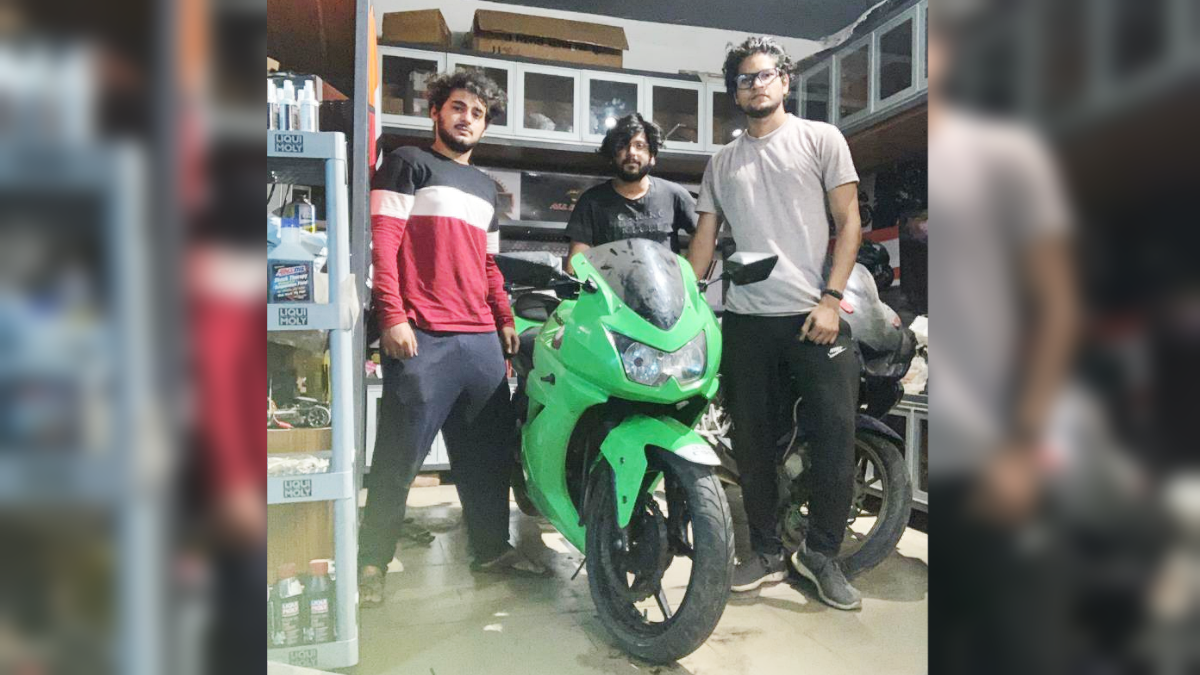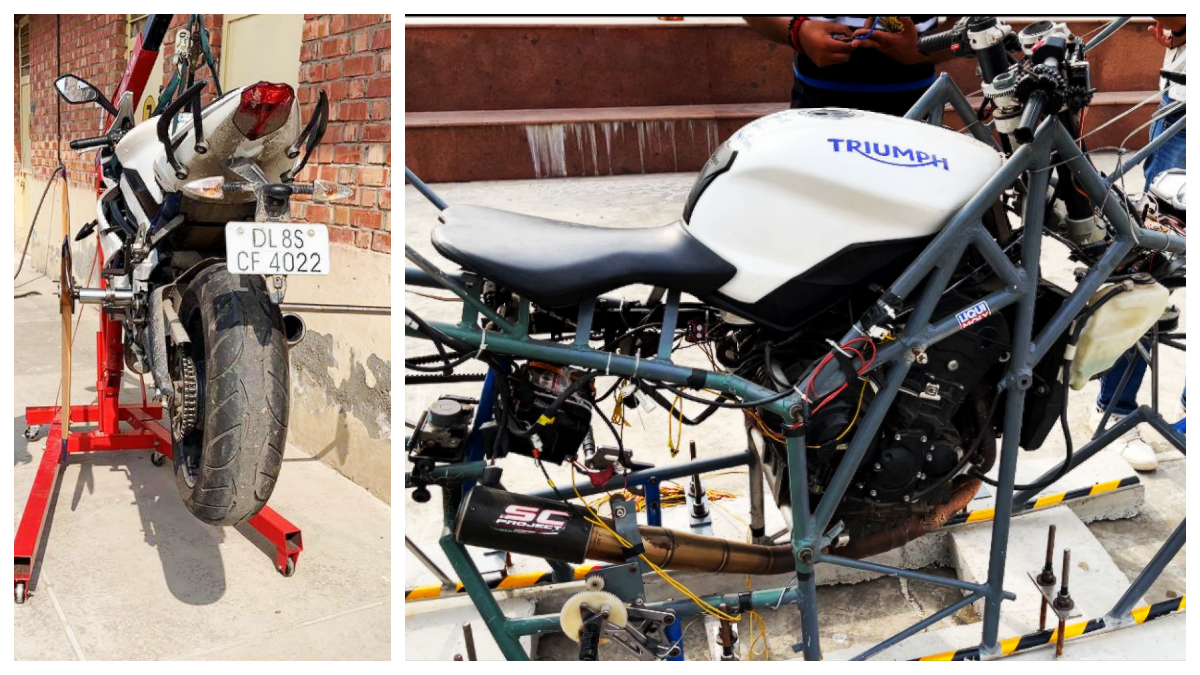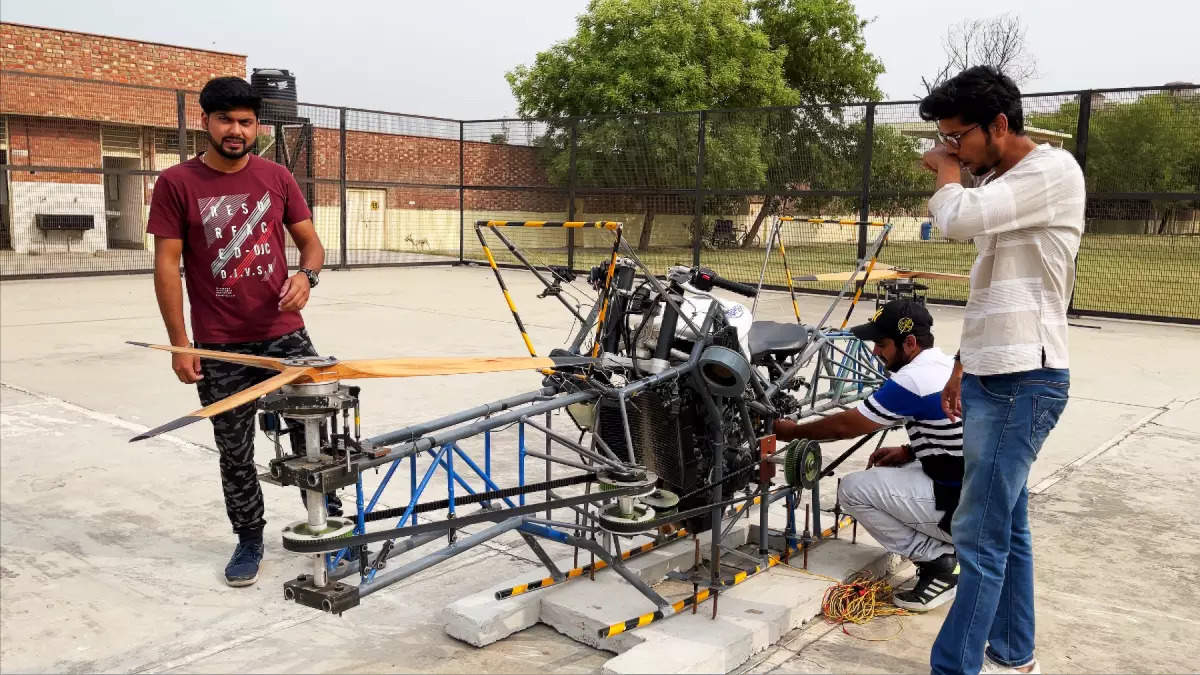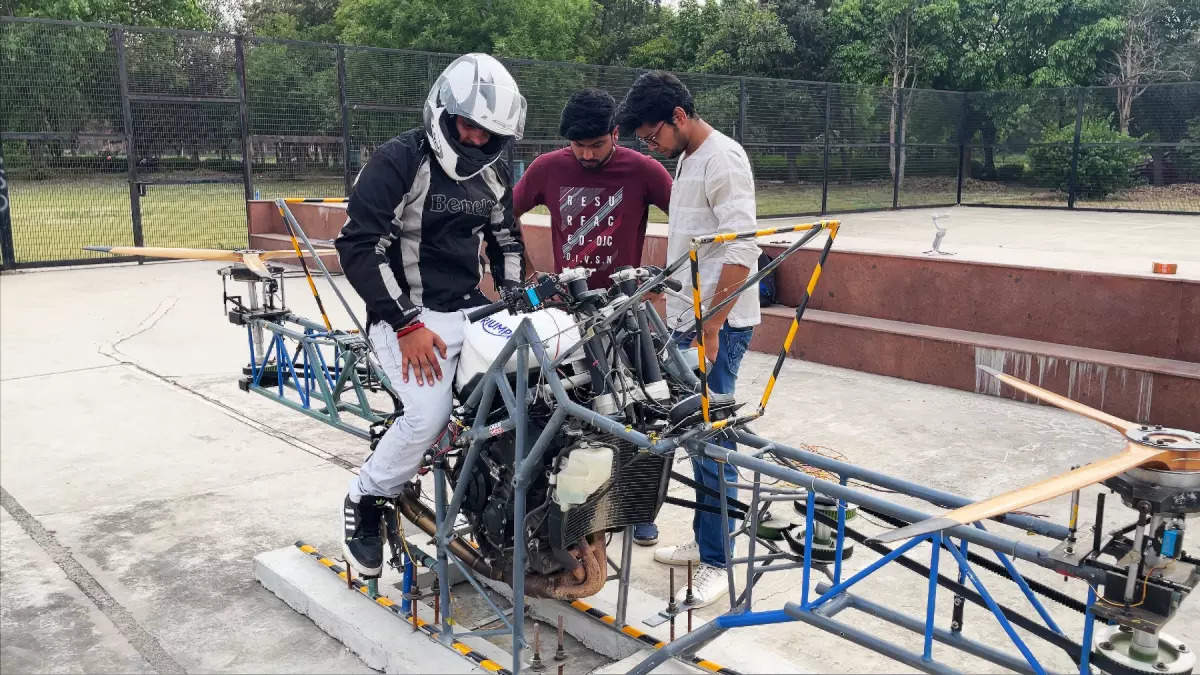team socorro
Originally a team of five, these engineering students gathered to undertake the project and began with theory and research in mid-2019. Initially, the boys thought of starting with a costlier jet engine, but as affordability was a major factor in reaching the mass market, they focused on the propeller. As of July 2020, he bought his first bike to start work, which was the Kawasaki Ninja 250. The Ninja was fitted with a 32-inch propeller, but ultimately, the team determined that Kawasaki’s parallel-twin was not capable of generating the amount. Thrust they needed for flight.

The first project bike was the Ninja 250. team with socorro
With a new shock, the team began looking for a bike that would have enough power to overcome wind-pulling constraints. That’s when Daksha and Sourav turned their attention to Triumph, the Siddhant’s daily runner at the time. Daytona 675 And he obliged. The Daytona engine gave the project several advantages. It was a powerful three-cylinder, producing 118.5 PS of power at 12,305 rpm and 70.2 Nm of torque at 9,900 rpm. But more importantly, it was much lighter at just 47kg when compared to other options like the Suzuki Hayabusa engine, which is around 100kg when ready to go.

Theory of Triumph Daytona’s Conversion 675
By the time development began, the Covid-19 induced lockdowns were in place, but the team still managed to continue operating. early development offlying bike‘ Started in a workshop in Mayapuri, West Delhi. He designed and built the new chassis from the ground up. The bike was disassembled and mounted on a new chassis with all the electricals. In September 2020 they moved to another shop where they made further changes and test run before setting up the prototype at the NSUT campus in Dwarka in late 2021. As a safety measure, the prototype can also be operated remotely.
The team’s flying bike made its first valid lift-off on April 12, 2022, and TOI cameras were on site to capture the moment. all three mechanical engineers were thrilled. The moment they’ve been imagining for so long, when the bike flashed for more than 8 seconds in steady flight, millimeters above the ground. It is secured on an improvised safety device in the middle of a tennis court inside the NSUT campus.

hoverbike prototype
It has been a year now that Siddhant, Sourav and Daksh completed their graduation in Manufacturing Process and Automation Engineering. These three, who were once a team of eight engineers, have invested more than Rs 15 lakh out of their own pocket to take the ‘flying bike’ to this stage. Today the trio find themselves torn between their dreams of building an affordable hoverbike for the masses or further studies and a stable future like the rest of the team.
Speaking on the future of Socorro, Siddhant Sharma said, “In an era where many startups in India are able to raise funds in crores, we want government processes to be more transparent. So that engineers like us can have a platform to present our ideas and concepts easily. I believe a project like ours has great potential for mass-market hoverbike solutions and we would love the opportunity to show our government and other industry players what we can do if we get the support we need to continue to grow Socorro. can achieve.

Project Socorro